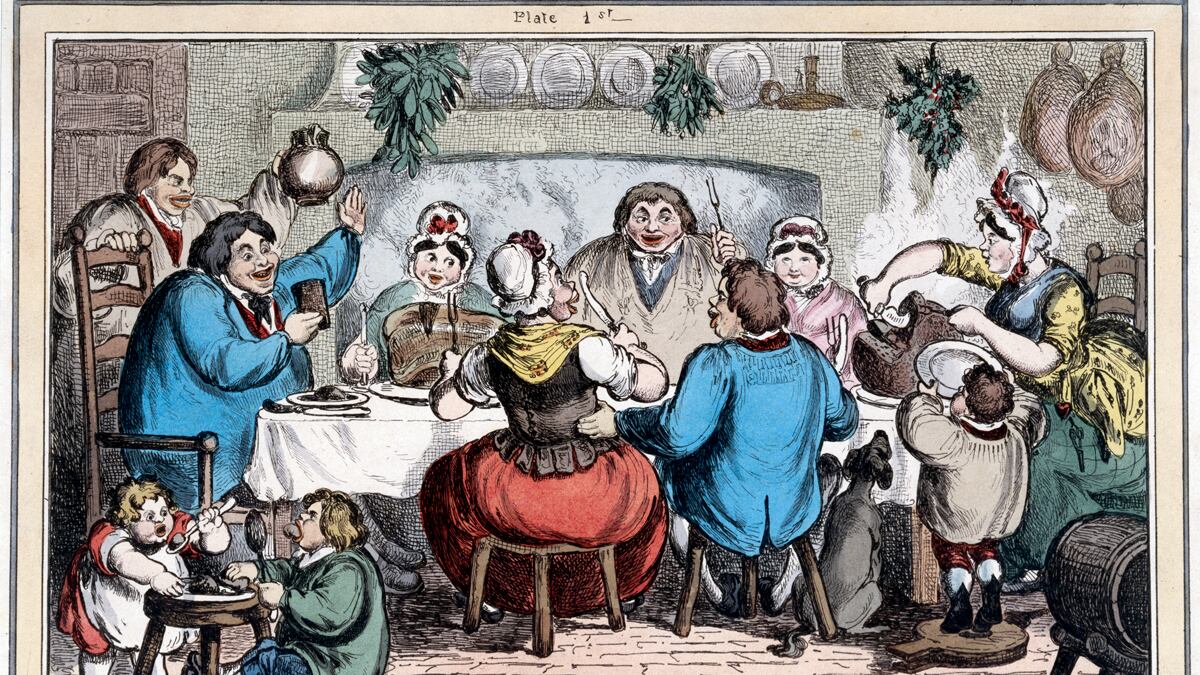This interview by Alec Ash first appeared in The Browser, as part of the FiveBooks series. Previous contributors include Paul Krugman, Woody Allen, and Ian McEwan. For a daily selection of new article suggestions and FiveBooks interviews, check out The Browser or follow @TheBrowser on Twitter.
What exactly is Christmas? It’s certainly not Jesus’s birthday, is it?
There’s several surprises that people encounter when they start to learn about Christmas. One is that Jesus probably wasn’t born on the 25th, because we don’t know when his birthday was. Secondly, it’s a surprise for many people that the early Christians did not celebrate Christmas. It took 300 years or so before there was an annual Christian celebration.
And Christmas originated as a pagan festival long before that, right?
When one studies the history one sees that there were, especially in Europe, many mid-winter festivals that existed prior to Jesus even walking the earth. Then Christians decided to start a birthday celebration, and intentionally set it in the middle of pre-existing mid-winter festivals. So right from the very beginning, the Christmas tradition has always been a mixture of a winter party and a Christian celebration. The struggle of how we balance those two is nothing new.
Let’s delve deeper into the pagan origins of Christmas with the first of your book selections, 4,000 Years of Christmas. How so, 4,000 years?
Some people look at this book and don’t do the calculation in the title—obviously, if Jesus was born approximately 2,000 years ago it means there’s a great pre-history to Christmas.
This is a tiny little book—barely 100 pages long, with small pages and big print—written by an episcopal priest with a background in anthropology. It was originally published in 1912, and I’m not sure that there’s been anything better published since. In a very brief way, he gives an indication of the pre-Christian roots of winter festivals, especially in central and northern Europe—with all kinds of traditions that Christianity then borrowed or morphed for its own purposes.
What I think about the festival is this: winter is hard for human beings to survive. It’s cold and it’s dark. Even today—with the benefit of electric lights and thermostats—we still have trouble in winter. Imagine what it was like for people in Europe in the Middle Ages to survive. So it’s very understandable that all kinds of culture would develop a mid-winter party to distract them. It would likely be when the days stop getting shorter and start getting longer—in other words late December. And you could guess what it would involve. It would feature lights, like candles and burning logs. It would feature evergreens, because they look alive when everything else seems to have died. You would have people gathering together and feasting.
All those things are for many of us our favorite parts of Christmas. Christians came along later, started a party, and put it right in the middle of these pre-existing winter festivals. Every time they moved to a new culture, they encountered some kind of winter festival that probably then became wrapped up in Christmas.
So where did this date the 25th come from?
We have no document that tells us clearly why they placed it on the 25th. What we do know is that when it was started, sometime in the 4th century, the Roman Empire already had three winter parties. One was the Saturnalia, which was a late harvest festival. The second was a new year’s celebration lasting five days. And in between there was the birthday of Mithras, god of the “unconquerable sun," which was on December 25th.
Maybe Christians chose the middle date because the symbolism worked—you have worship of a sun god, and Jesus is talked of as the light of the world pushing back the darkness. Another way to think of it is taking the birthday of the sun god, and turn it into the birthday of God the Son. Or it might simply be that Christians were trying to hijack the popularity of the mid-winter parties, or trying to tame them because they were too wild.
Presumably this story is continued in your second pick, The Origins of Christmas.
This is another brief book accessible to general audiences, written by a Catholic religious studies professor in the U.S. He talks about what the limited Biblical evidence is for Christmas, and where we got some of the other traditions. Much of our Christmas story isn’t really in the Bible—in order to develop a big birthday celebration we’ve added all kinds of traditions. This book looks at the origins of St. Nicholas, the Magi, and so on.
What does he say about St. Nicholas?
He talks about how St. Nicholas is really a legendary figure. It’s difficult to tell what is historical and what is legend, but the legends are I think marvelous. He was a bishop in the 4th century in what’s now Turkey, and gained a reputation for generosity, and for caring for young children and travelers. As a saint he almost became the equivalent of a guardian angel. He became very popular, and his saint’s day, December 6th, at least was in the month leading up to Christmas. So over time he became associated with Christmas celebrations. Then, when the legend got to the States, and especially to New York, St. Nicholas morphed into Santa Claus.
Tell me more about how that happened.
Well, New York was founded as New Amsterdam, with Dutch beginnings. And the Dutch kept alive the tradition of St. Nicholas where many other countries, influenced by Protestantism, had deemphasized him. So St. Nicholas hopped the waters with the Dutch to New York. Then, in a very complicated story in which you would have to trace five or six steps because of one person or another’s influence, he morphs and becomes de-frocked.
In Washington Irving’s writings, he is a Dutchman who rides a wagon pulled through the air by horses on St. Nicholas’s day. Then later on, with the famous [1823] poem “Twas The Night Before Christmas," he moves to Christmas Day and gets reindeer.
In that poem, as you point out in your own book, St. Nicholas is an elf.
Yes, which is a complete surprise for most people. If you buy a picture book of that poem, the illustrations are usually of the full-size, jolly, red and white Santa Claus. But if you read the words of the poem, he’s an elf—not just in the phrase “the jolly old elf”, but it talks about “a miniature sleigh," "tiny reindeer” and his “little round belly." He’s an elf. So he still has to ”morph more, through the art of [19th-century American cartoonist] Thomas Nast and then the advertisements of Coca-Cola, until he becomes our modern image of Santa Claus.
To continue reading Bruce Forbes discussion of Christmas history, visit here.






